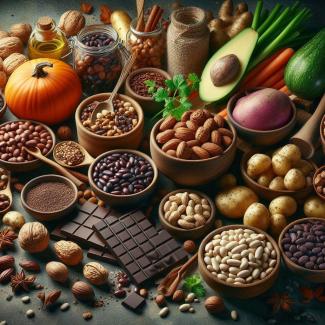
Quinoa (pronounced KEEN-wah) is a highly nutritious and versatile grain-like crop that has gained popularity in recent years for its potential health benefits. Here's an overview of the effects of quinoa on general health and some common types of quinoa:
Health Benefits of Quinoa:
- Nutrient-Rich: Quinoa is rich in essential nutrients, including protein, dietary fiber, vitamins (such as B-vitamins), minerals (like magnesium, iron, and potassium), and antioxidants. It's often considered a complete protein source because it contains all nine essential amino acids.
- Gluten-Free: Quinoa is naturally gluten-free, making it a suitable grain alternative for people with celiac disease or gluten sensitivity.
- Weight Management: The high protein and fiber content in quinoa can promote a feeling of fullness, aiding in weight management and reducing overall calorie intake.
- Heart Health: Quinoa contains heart-healthy monounsaturated fats and can help lower cholesterol levels due to its fiber content. It's also rich in antioxidants like quercetin and kaempferol, which may contribute to cardiovascular health.
- Blood Sugar Control: Quinoa has a low glycemic index, meaning it has a minimal impact on blood sugar levels. This makes it a good option for people trying to control their blood sugar.
- Digestive Health: The fiber in quinoa supports digestive health by promoting regular bowel movements and a healthy gut microbiome.
- Nutrient Density: Quinoa is more nutrient-dense than many other grains, making it a great addition to a balanced diet.
Common Types of Quinoa:
- White Quinoa: This is the most common variety and has a mild, nutty flavor. It cooks up fluffy and is often used in a variety of dishes.
- Red Quinoa: Red quinoa has a slightly earthier flavor compared to white quinoa. It holds its shape well when cooked and adds a pop of color to salads and other dishes.
- Black Quinoa: Black quinoa is similar in taste and texture to white quinoa but is darker in color. It's also a good choice for adding variety to your meals.
- Tri-Color Quinoa: This blend typically includes white, red, and black quinoa, offering a combination of flavors, textures, and colors.
It's important to note that quinoa can be prepared in various ways, such as in salads, soups, pilafs, and as a side dish. To enjoy the health benefits of quinoa, consider incorporating it into a balanced and diverse diet. Additionally, always rinse quinoa before cooking to remove its natural coating, which can have a bitter taste due to compounds called saponins. Most quinoa available in stores is pre-rinsed, but it's a good practice to rinse it again at home.






